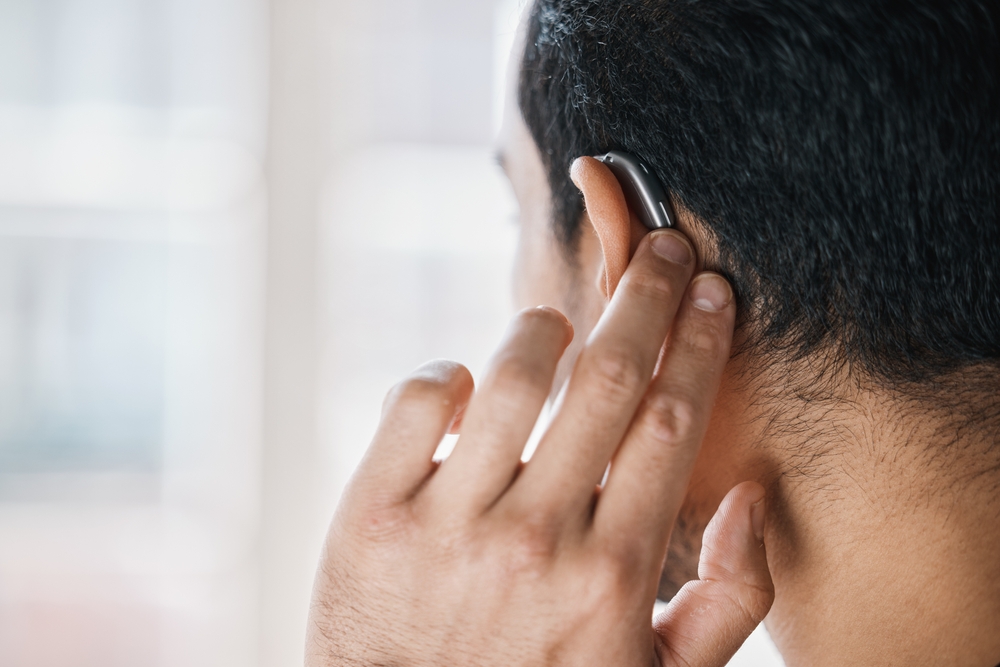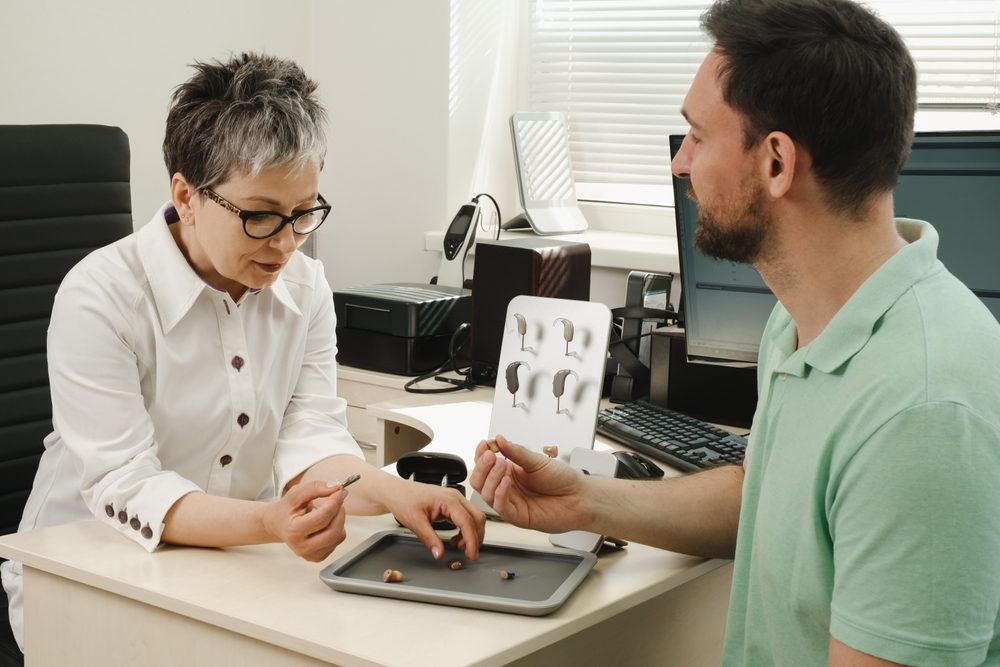Technological advancements have resulted in effective treatment for hearing loss. These days, all you need to do is find the correct hearing aid that fully corrects your hearing loss. While it might sound like an easy task, there are many models of hearing aids on the market, and it’s not uncommon to feel overwhelmed when searching for a model that fits your hearing loss needs.
Luckily, there are a few simple steps that you can follow with the help of a hearing professional that will make the whole process better. This way, you can have a simple and worry-free experience when looking for the perfect hearing aid.
Hearing aids and how they work
Let’s start the process by discussing what hearing aids have in common.
Hearing aids are now modernized and digital. This means they all share four essential parts:
- The microphone captures environmental sounds and transmits them to the hearing aid’s digital processor.
- The digital processor is programmed by a hearing specialist so that it can modify the sound and signal from the microphone, which it sends to the hearing aid’s amplifier.
- The amplifier boosts the sound’s volume within the guidelines of the hearing aid’s programming. It boosts only those frequencies that are difficult for the patient to hear. Once amplified, the signal goes to the speaker.
- The speaker transmits the processed sound to the ear. The outcome is a louder and clearer sound.
Most hearing aids also have a battery and switches that control the unit and volume.
The differences between hearing aids
We’ve covered the basic parts that are common to all hearing aids, and now it is time to discuss the four differentiating parts that make hearing aids different. A hearing specialist can help you figure out which are right for you. These options include:
- Style – Hearing aids come in many styles, but the focus is on how the hearing aid fits you and your lifestyle. Your hearing specialist will look at several things, including your hearing level, dexterity, and the type of environments you plan to use your hearing aid in.
- Ease of use – A hearing aid should fit your life and lifestyle like a glove. As such, the size of the hearing aid matters as does its performance and how you use it. Will it be easy for you to use? Is the size right for your hand? Will it work in all the varied environments that you participate in? Does it work with your cell phone?
- Functionality – Will telecoils improve the use of your hearing aid with your phone? Will directional microphones allow you to hear speech from many directions better? These are other questions a hearing professional can help you answer.
- Price – Hearing aid professionals work to find you a hearing aid that meets both your hearing needs and your budget. This includes looking at value and not just cost. All financing options should be carefully considered.
Let’s explore each of the four variables in more depth.
Hearing aid style
Hearing aids have many styles, and the choices for style may be based solely on aesthetics, or the user may need to make other considerations based on fit and desired use.
The most common styles include:
Hearing aids that fit behind-the-ear (BTE) – BTE hearing aids house many their parts in a small plastic case that fits easily and comfortably behind the ear. Their case connects directly to the earmold or to an earpiece via a clear, flexible tube. Also available are mini-BTE hearing aids, which are smaller versions of the BTE hearing aid. They are also easy to maintain and clean.
In-the-ear (ITE) hearing aids – contain their parts in a small shell that fits into the natural receptacles in the outer part of the ear. ITE hearing aids offer a smaller size in comparison to the BTE units and are larger than the hearing aids that fit (ITC) in-the-canal. The benefit of ITE hearing aids is that they are easier to handle and maintain than are the ITC hearing aids, and they are also easier to hide than the BTE hearing aids.
There are two versions of the In-the-canal (ITC) hearing aids. One sits in the outer canal, and one is completely-in-canal (CIC – The benefit to an ITC hearing aid is that they are nearly invisible. Their parts are tiny and fit into a microcompartment so that the hearing aids fit partially or entirely into the ear canal.
When you consider which style of hearing aid you want, remember that there are other considerations too. Those include the size of the unit, how easy it is to use with your level of dexterity, the life of the battery, and how the unit will function in your life and lifestyle. These are all aspects of choosing a hearing, and you should discuss each of these points with your hearing specialist.
Hearing aid: Ease-of-use
Many people think about the style of the hearing aid they want and don’t spend enough time considering the unit’s ease-of-use. A good example is the completely-in-canal (CIC) hearing aid, which offers near invisibility, but that is also more difficult to handle while you clean or maintain it. A better choice might be a behind-the-ear style hearing aid, which is larger and easier to manipulate while being more discreet.
Lifestyle choices also are important such as a digital hearing aid that pairs with mobile technology for easier control. They work in a similar way as your cellular phone. Some tech makes it much easier to monitor the hearing aid’s setting or battery levels. Digital technology also means you can change the volume easily to adapt to different hearing environments.
Hearing aid functionality
Your hearing aid should mirror your needs, so be sure to discuss situations that you feel will impact the use of your hearing aid. For example, cell phone usage might mean that you will need telecoils or even Bluetooth technology. Be sure to mention if you change hearing environments often, such as going outside and inside frequently.
If your environment is noisy or if you have to focus on one speaker among many, then be sure to discuss the power and functionality of a directional microphone and tools that suppress background noise. These are tools that can easily improve the functionality of the hearing aid to help you enjoy conversations.
Hearing aid price and financing
The last step is to choose a hearing aid that fits your budget. Remember that you are investing in improving your quality of life. Remember that there are financing options available that help make the perfect hearing aid fit your budget.
Which hearing aid you choose and what you can afford to pay are up to you. The benefits of being able to hear clearly and to participate in life more completely have great value. They have the power to improve the quality of your life. Those are traits that add value.
To put this into perspective, compare the monthly cost of a hearing aid to some of your other monthly bills. Many times, the cost is comparable to cable or satellite TV, and with a hearing aid that fits your life, you can actually enjoy watching TV and movies again.
Final considerations
The entire process is easy. All you have to do is pick a few models that you like and then talk with the hearing specialist to dial in the options available. One or two models will emerge that fit your life and your lifestyle. The final step is to choose one of those that has a style you like, is easy for you to maintain and clean, and that functions well while fitting into your budget.
Once you make your decision, your hearing specialist will set the hearing aid up so that it exceeds your needs. This process includes customizing the unit and programming it to your hearing test. Even the best hearing aid will work better after the specialist has programmed it for you.
Now all you have to do is to try it out. Be prepared for an amazing change in what you can hear and how much better you can fit into the conversations around you.



